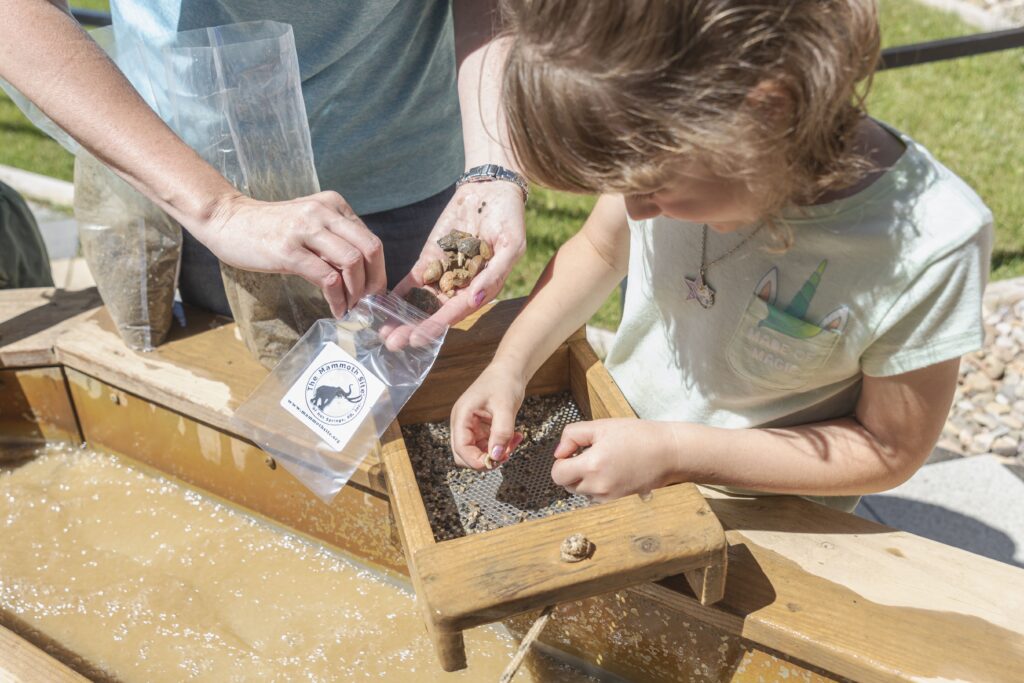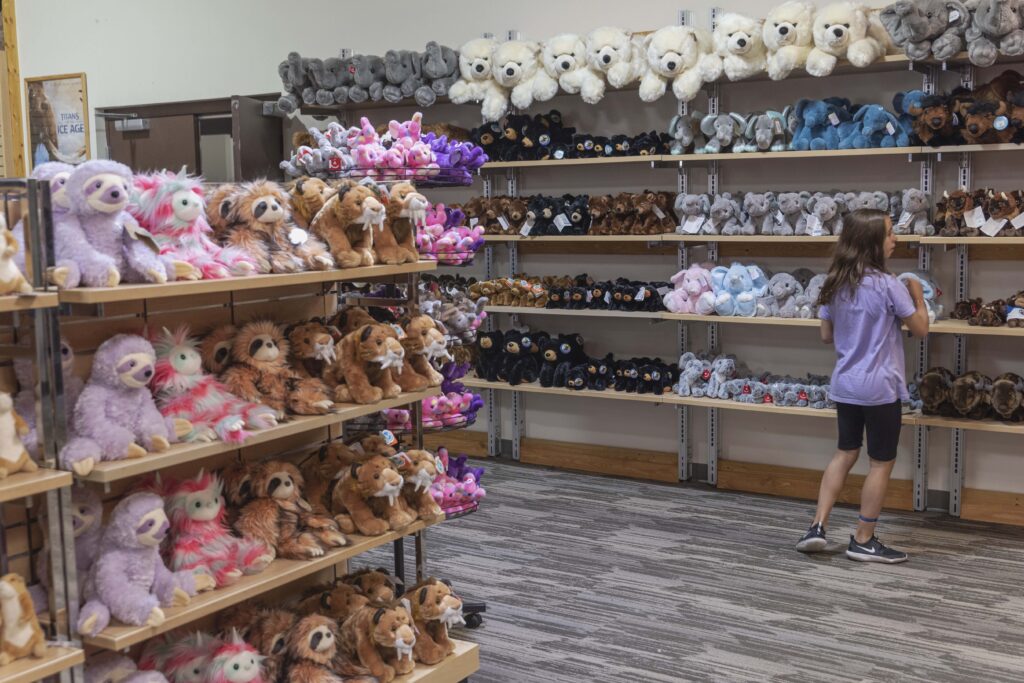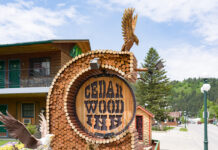Imagine the Black Hills over 100,000 years ago… Fertile valleys and grasslands provided the perfect feeding ground for Columbian and wooly mammoths, along with other Ice Age animals.
A warm-water sinkhole granted a place for the animals to graze over the winter months as snow covered the previous summer’s grass. Over thousands of years, sediment slowly filled the sinkhole, covering mammoths, as well as countless other plants and animals.
In 1974, Phil Anderson—a developer—was working on an excavation when he made an astonishing discovery. He uncovered various bone fragments, including a tusk, unearthing a significant paleontological find.
Upon further investigation in the summer of 1975, 12 remains of mammoths had been uncovered. The Hot Springs Mineral and Gem Society realized the significance of the find and formed The Mammoth Site of Hot Springs, SD, Inc. to preserve and create an in-situ exhibit of the fossils.
“Our mission is the preservation, research, and interpretation of The Mammoth Site and the development of a broad understanding of the Late Ice Age record across a global framework,” said public relations coordinator Claire Scarborough.
At The Mammoth Site, guests will experience an educational look at the preservation efforts. Here are five things you can’t miss at your visit to The Mammoth Site.
1. Learn From Working Paleontologists
“During the summer season, visitors are able to watch paleontologists in action as they continue The Mammoth Site’s mission and excavate more fossils in the bonebed,” explained Scarborough.
Through the use of a variety of tools, the paleontologists carefully uncover the fossils of mammoths and 87 other late Ice Age species.
Scarborough says the floor is open to the public and they are more than welcome to ask questions about the excavation process.
The experience is a unique opportunity as digs are not commonly open to the public, whether that be due to logistics of the site or the outside environment.
“Since our dig site is enclosed within our building, our visitors are able to witness this experience,” explained Scarborough.
She adds that when it comes to questions, don’t hesitate to ask as their paleontologists look forward to answering your curious thoughts.
UPCOMING SUMMER CLASSES
Offered Daily from June 1 – August 15
– Jr. Paleontology Program
– Family Dig Program
– Atlatl Family Throw
Adopt an Ice Age Animal
Adopt a Mammoth, Musk Ox, or Smilodon (Saber-toothed Cat) in the gift shop and receive a certificate of adoption and kit.

2. Discover Gemstones and Fossils in the Sluice
Become a paleontologist for a day and don’t be afraid to get your hands dirty looking for your own treasures.
“After purchasing a bag of sluice dirt from the gift shop, visitors will use the sluice to pan for their own gems and fossils,” explained Scarborough. “This is done by pouring the dirt into a mesh box and submerging it repeatedly in water to sift the dirt from the gems or fossils they’re looking for.”
She adds that this allows visitors to experience interactive science with the bonus of keeping what they find.
“This activity also mimics the screenwashing process, which is what we do with the sediment removed from the Bonebed in order to find microfossils,” said Scarborough.
There is an abundance of a variety of relics to be discovered, as no two bags are the same.
“The fossils you can find include ammonite, petrified wood, sea clams, and shark teeth,” stated Scarborough. “The gemstones include amethyst, calcite, garnet, quartz, selenite, and topaz.”

3. Watch Fossils Be Cleaned and Prepared
A large part of the process of paleontology and a fossil’s life is the different methods of fossil repair and preparation.
“Visitors can expect to see a variety of techniques being used to prepare fossils, including air scribing and picking, as well as watching activities like fossils being removed from fossil jackets,” said Scarborough.
For The Mammoth Site, it’s imperative that the paleontologist show every step of the process, from initial discovery to being cataloged into collections.
It’s not an everyday occurrence to experience fossils up close, let alone being cleaned, admitted Scarborough. She encourages visitors to ask questions about their work or methods.
Visitors will also get to directly interact with those working on and preparing the fossils, but not only are they watching, but learning as they’re working.
“The process of fossil preparation is almost an art form with how precise the work is and all of the little bits and pieces that workers end up working with,” she said.

4. Exciting Exhibits
“We have a couple of great exhibits being installed that will help visitors learn more about the late Ice Age as a whole and not just in western South Dakota,” said Scarborough.
This upcoming summer, two brand-new exhibits will be introduced to the site. The first will display three life-size replica skeletons: a giant ground sloth, a saber-tooth cat, and a direwolf. The second exhibit will take visitors through a cave system to see how fossils are collected in dry and wet cave environments.
“These exhibits are to help further a comprehensive understanding of the late Ice Age, from the animals to the environment to how we study it today,” explained Scarborough.
The dynamic displays will give an up close and personal experience through 3D printers, a pronghorn exhibit, an interactive stream table, an AR sandbox, and finally an exhibit on baby mammoth mummies.
When asked about a unique aspect of the exhibit, Scarborough replied, “I mean, how often are you face-to-face with a giant ground sloth?”

5. The Gift Shop
What better way to end your day than taking a stroll through The Mammoth Site gift shop and purchasing one of a kind memorabilia.
Choose from a copious assortment of apparel, mugs, shot glasses, stuffed animals, replicas, 3D models, puzzles, science kits, and more.
All Mammoth Site merchandise is designed exclusively for the museum, and Scarborough shares that guests should be on the lookout for brand new designs for the summer.
“The gift shop is the perfect way to commemorate your visit to The Mammoth Site,” said Scarborough.
For more information, visit MAMMOTHSITE.ORG+


















